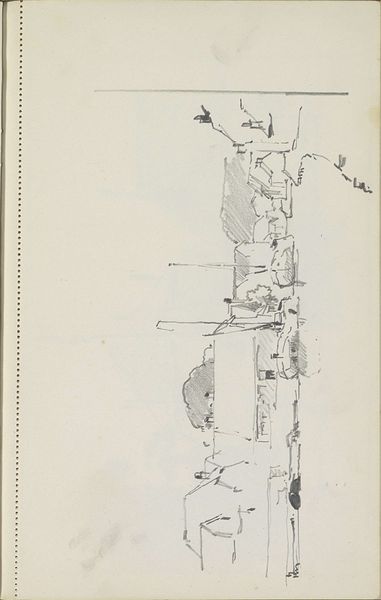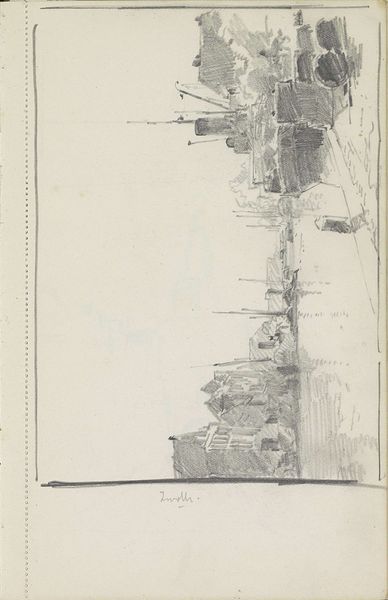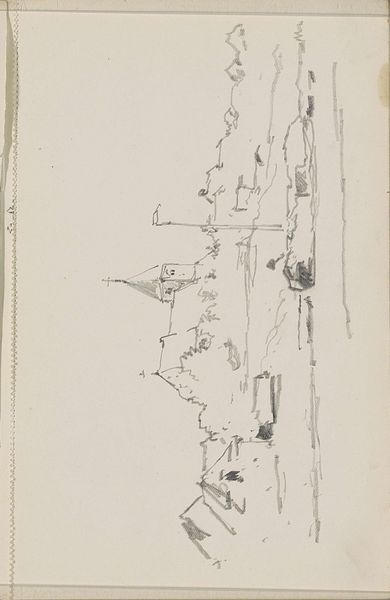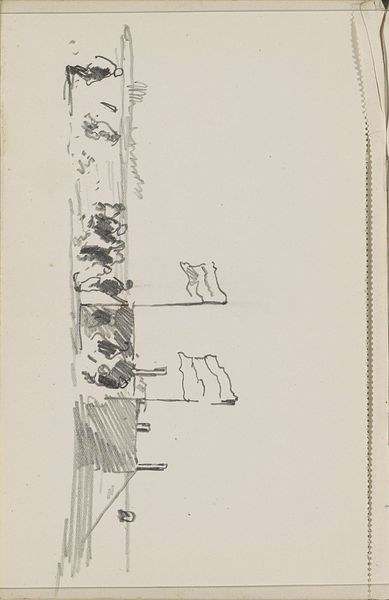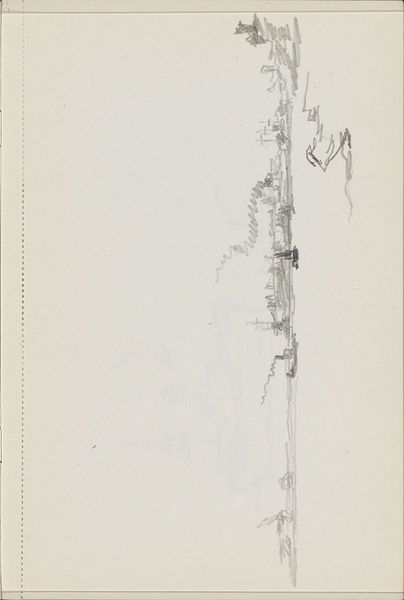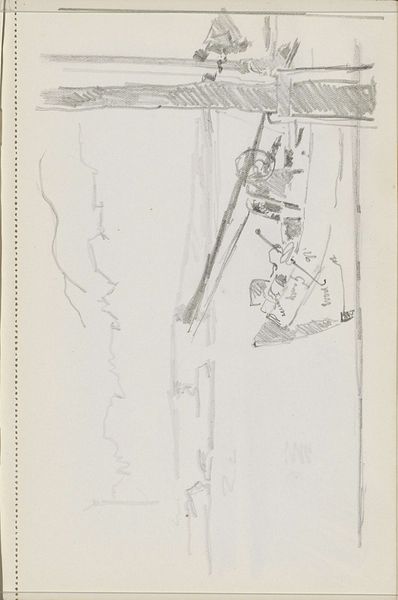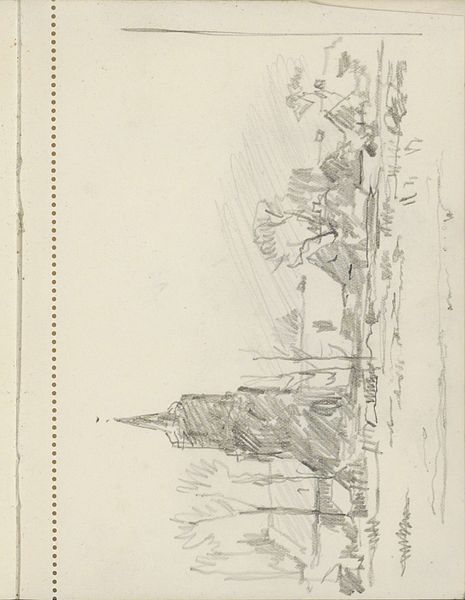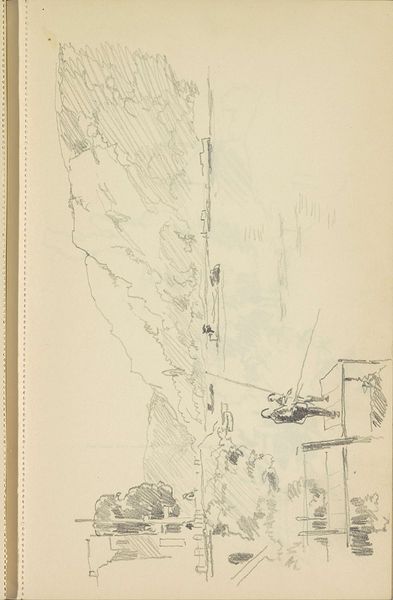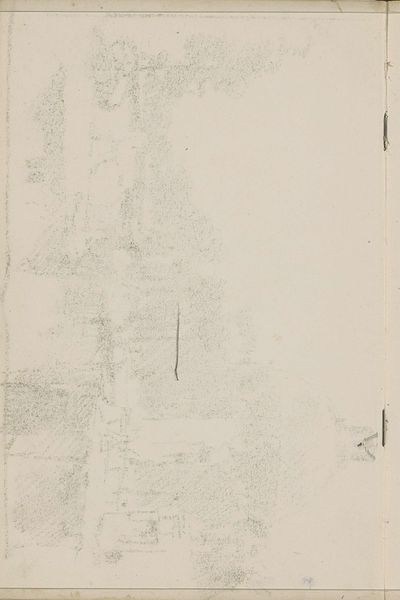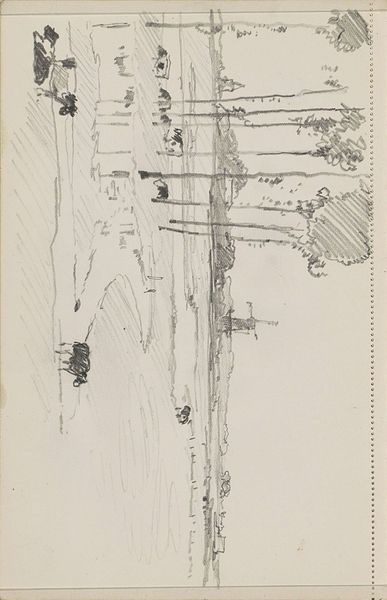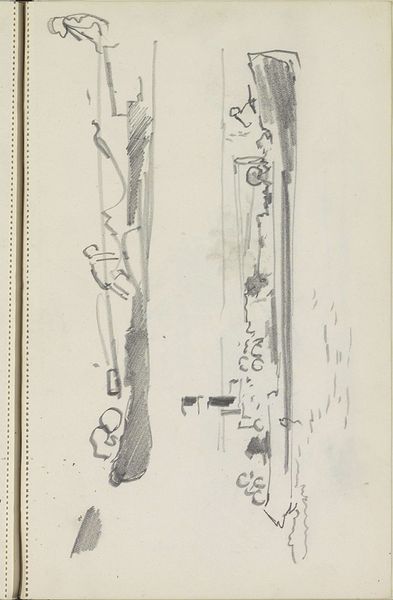
Copyright: Rijks Museum: Open Domain
Curator: Here we have Cornelis Vreedenburgh’s “Aangemeerde zeilboot,” created sometime between 1890 and 1946. It’s currently held here at the Rijksmuseum. The piece primarily employs pencil and ink on paper. Editor: My first impression is the immediacy of it. The sparseness of the lines creates a sort of wistful feeling, like a memory quickly sketched. Curator: I agree. Let's consider the materials chosen by Vreedenburgh. Pencil and ink, readily accessible, inexpensive, suggesting this wasn't necessarily intended as a finished, polished work. More like a record, an impression. The use of paper itself is crucial—a surface cheap and available, enabling artistic exploration and mass production, differentiating it from stretched canvas for example. Editor: Precisely. Notice the balance between the open space and the denser linework around the boat itself. The varying pressure of the pencil creates depth and shadow, really emphasizing the three-dimensional structure, particularly the textures of the boat, doesn’t it? I’m drawn to how the visible strokes invite us to visually participate in the creative process itself. Curator: Right, but to really get it we can also contextualize it with the artistic and social environment in which Vreedenburgh was operating. How artistic labour itself has shifted from an aristocratic luxury towards mass production, from ateliers and commissions, towards street scenes and mass production? We can investigate questions like what artistic influences can be linked with his location or artistic collective memberships? Editor: Interesting points. The formal qualities invite an engagement with feeling. I also note the contrast between the solidity of the boat and the fleeting, almost ethereal nature of the background. The lines that suggest water and sky are far less defined, creating a sense of atmospheric perspective. This suggests impermanence; a study, certainly, rather than a definitive statement, doesn't it? Curator: And perhaps it suggests a society and economy that embraced new technologies in shipbuilding, transportation, artistic mediums… how did labour impact those subjects of boats on paper? What materials are used to make these vessels versus making sketches of them? What implications does it have on the labour itself? Editor: Food for thought! Thinking about how a simple ink sketch, using lines and pressure, achieves to give dimension and convey such a clear message adds a richness to what might have been considered a simple drawing. Curator: Precisely, and thinking about it as the consequence of different forms of labour creates different artistic understandings!
Comments
No comments
Be the first to comment and join the conversation on the ultimate creative platform.
